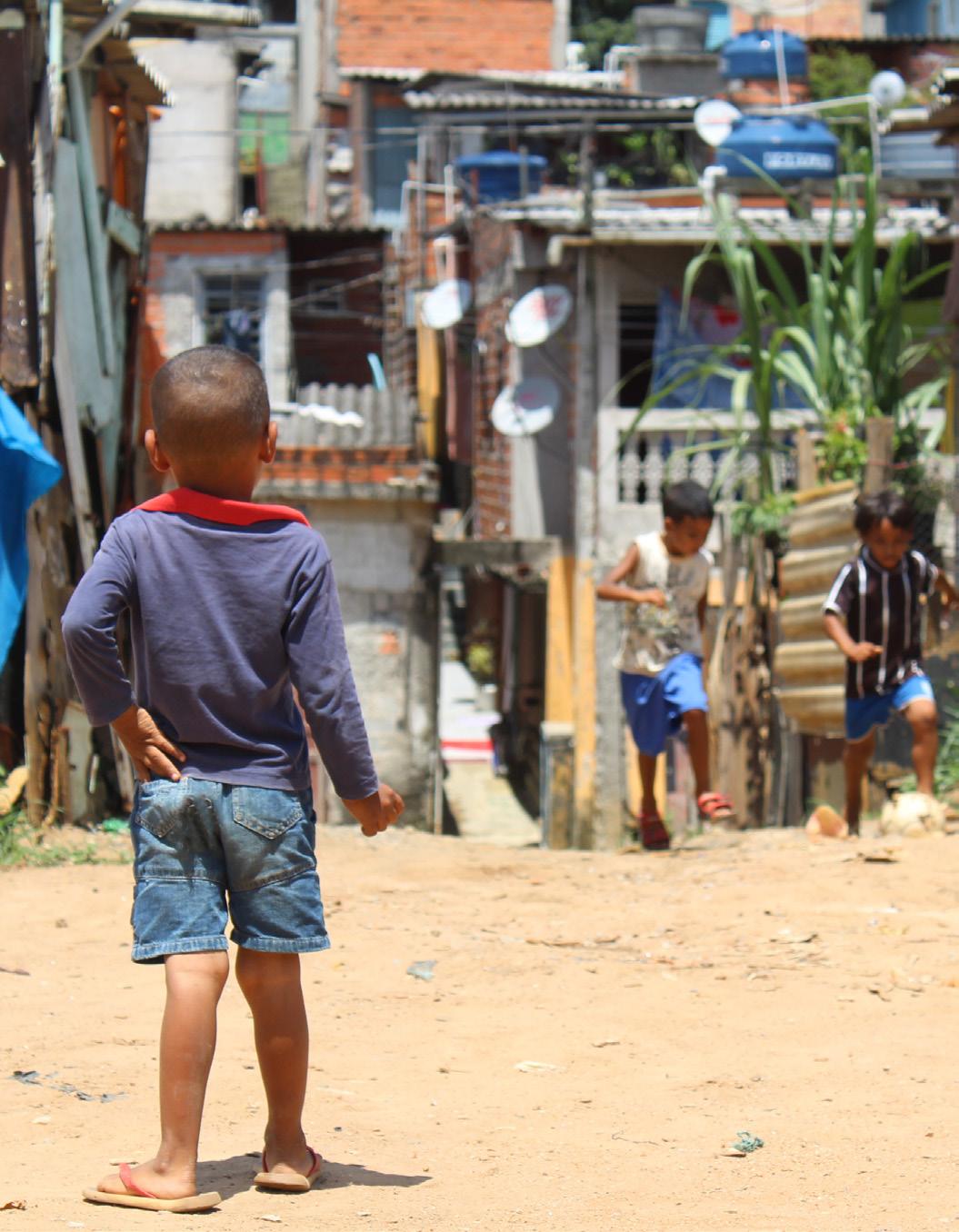
1 minute read
Summary
KEYWORDS:
Participatory Rural Appraisal (PRA) • Design • Infrastructure • Mapping • Water and Soil Testing • Community Engagement • Stormwater • Sewage •
89 (left) Kids Playing Soccer in the Streets.
In sum, Participatory Rural Appraisal (PRA) is a method that builds off of RA and is used in informal areas to incorporate participation in collecting data and gathering community input. These rapid appraisals emphasize sourcing local knowledge and enabling people to make their own decisions. The PRA approach encourages stakeholders to work together, transfer knowledge, and come to a consensus. It motivates residents to collaborate and learn-by-doing through transparent procedures. This was an effective method for the Ocupação Anchieta field visit to ensure that residents were active and participating throughout the planning and design process (BinswangerMkhize, 2010).
To analyze the data, the Taubman Team triangulated the results and found five major categories of findings. First, the creek and springs is the most polluted and environmentally threatened area of the Occupation. Wastewater and stormwater runoff threaten the water and soil quality of this area. Secondly, infrastructure is lacking, or precarious where it exists. Upgrading sewerage will help improve the Occupation’s environmental impact, especially as it relates to the dwellers’ tenure security. Third, housing is built by residents and made of many types of reused materials. Living conditions, however, could be improved. Fourth, the findings show that there is a strong sense of community in Ocupação Anchieta. Residents seem to have a high interest in adding certain facilities and programs to the Occupation. Lastly, the lack of an efficient waste management system is evident through the pollution in the Occupation and will help guarantee tenure security. It will also improve the environment as well as the community’s health and wellbeing. These findings inform the Ocupação Anchieta Advança! Plan.






